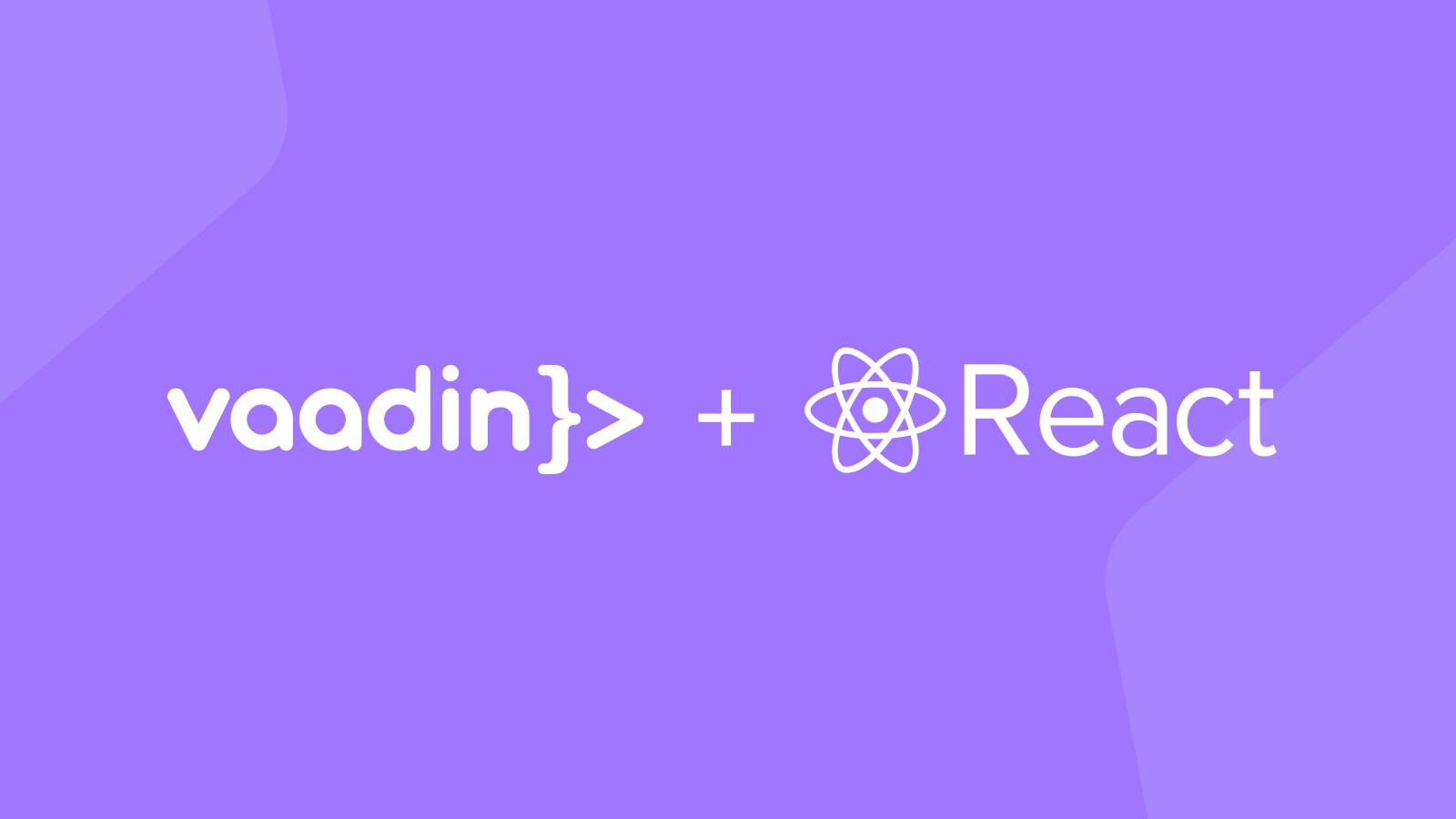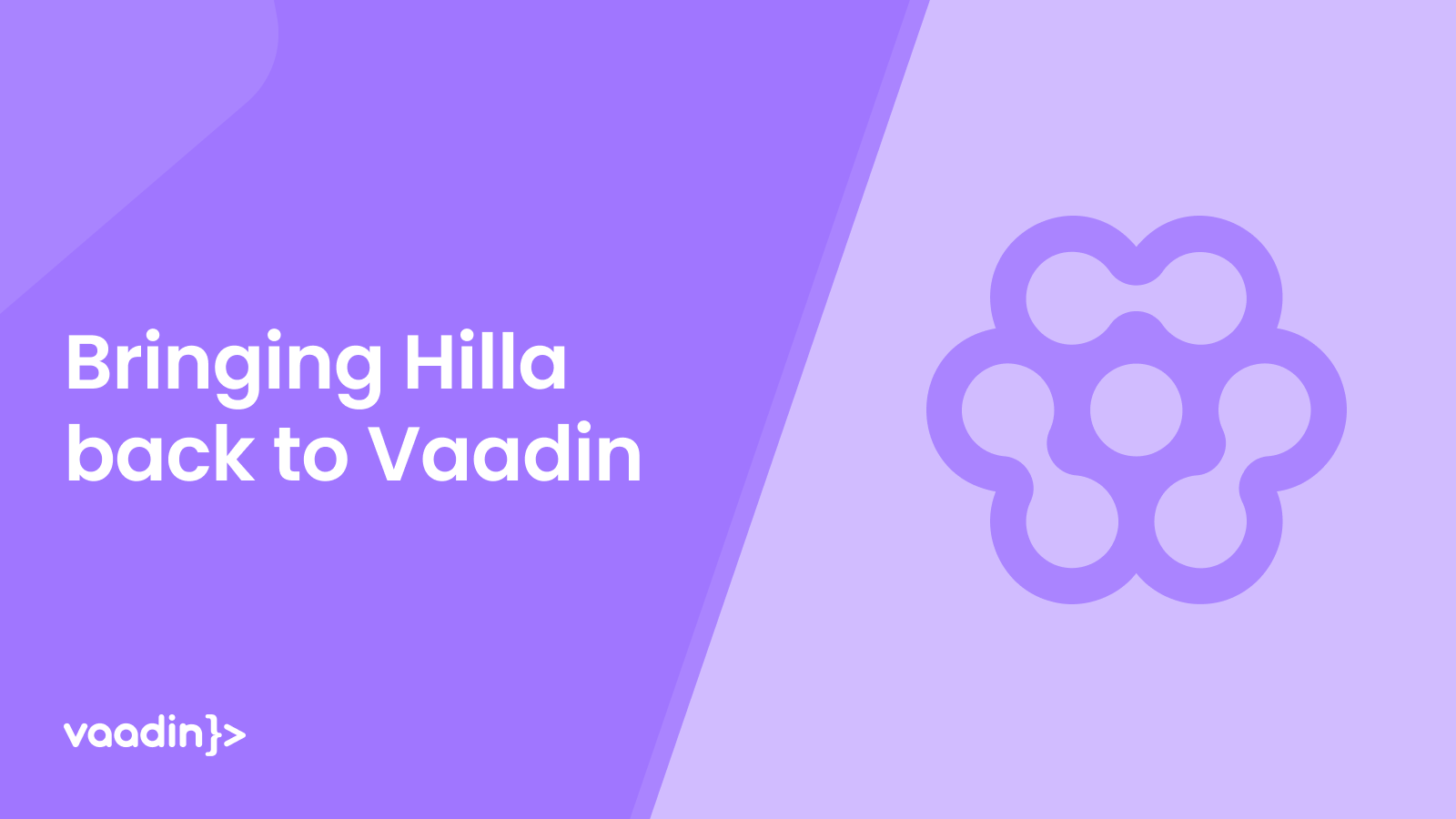Author: Leif Åstrand

We recently announced merging the Hilla framework into the Flow framework. This follow-up gives more detail on what will change in practice for current Vaadin users and where we're heading in the future.

What Java 24 means for Vaadin applications
One of the really awesome things about Java is its forward compatibility. This means that existing Java code can benefit from language features that didn't even exist when the code was written. This applies on two different levels - first, there are the fully automatic cases where, e.g., ...

The state of micro frontends with Vaadin
Micro frontends are an architecture in which the application's UI is modularized so that one part of the UI can be redeployed independently of other parts, thus forming a set of self-contained systems. There are multiple different reasons for building an application in this way, and there are also ...
.png)
Seeing through objections against full-stack development
Maybe it's just me standing on the top of a hill screaming out to the world about the benefits of Java full-stack development. Or maybe you're also inspired by the idea but struggling to convince your customer, manager, or other colleagues? Many of the common objections against the concept are ...

Full-stack development: The future of web applications
Let's set the stage with a cliché: software development is constantly evolving towards ever higher levels of abstraction. We have object-oriented and functional programming built on top of imperative programming on top of assembler on top of machine code. Each new paradigm starts with some rough ...

Vaadin 24.4 opens the door to the land of React
One prominent theme in Vaadin 24.4 is integration with React in various forms. React has grown in popularity to the point where it's currently the most popular UI rendering library for web applications. This means that there's excellent availability of third-party components, learning resources, ...

Hilla is now an integrated part of the Vaadin platform
I'm happy to announce that we're bringing Hilla back under the Vaadin brand as a part of the Vaadin platform. In addition, we're making it more convenient to configure routing so that new view files are automatically registered as routes. Finally, we'll start recommending signals for UI state ...

Why you don't need REST endpoint classes with Hilla
We are introducing some new terminology with Hilla 2.2. We have renamed the server-side logic that you call from the browser to "browser-callable services" instead of "endpoints." We have realized that the endpoint terminology leads us to think about the network communication layer in an overly ...

Why we built Hilla
Does the world really need yet another frontend framework? We believe it does, because different frameworks have different underlying assumptions that lead to optimizing for different things. Let's take a look at the principles that have led us to build Hilla as a framework that integrates Spring ...

Vaadin 23 will require Java 11
Vaadin 23, releasing in March 2022, will require Java 11. To give users additional time to upgrade from Java 8 to a newer version, we're extending the maintenance period of Vaadin 22 until March 2023. Time flies, and it’s already been 8 years since Java 8 was released. It has also been 4 years ...
